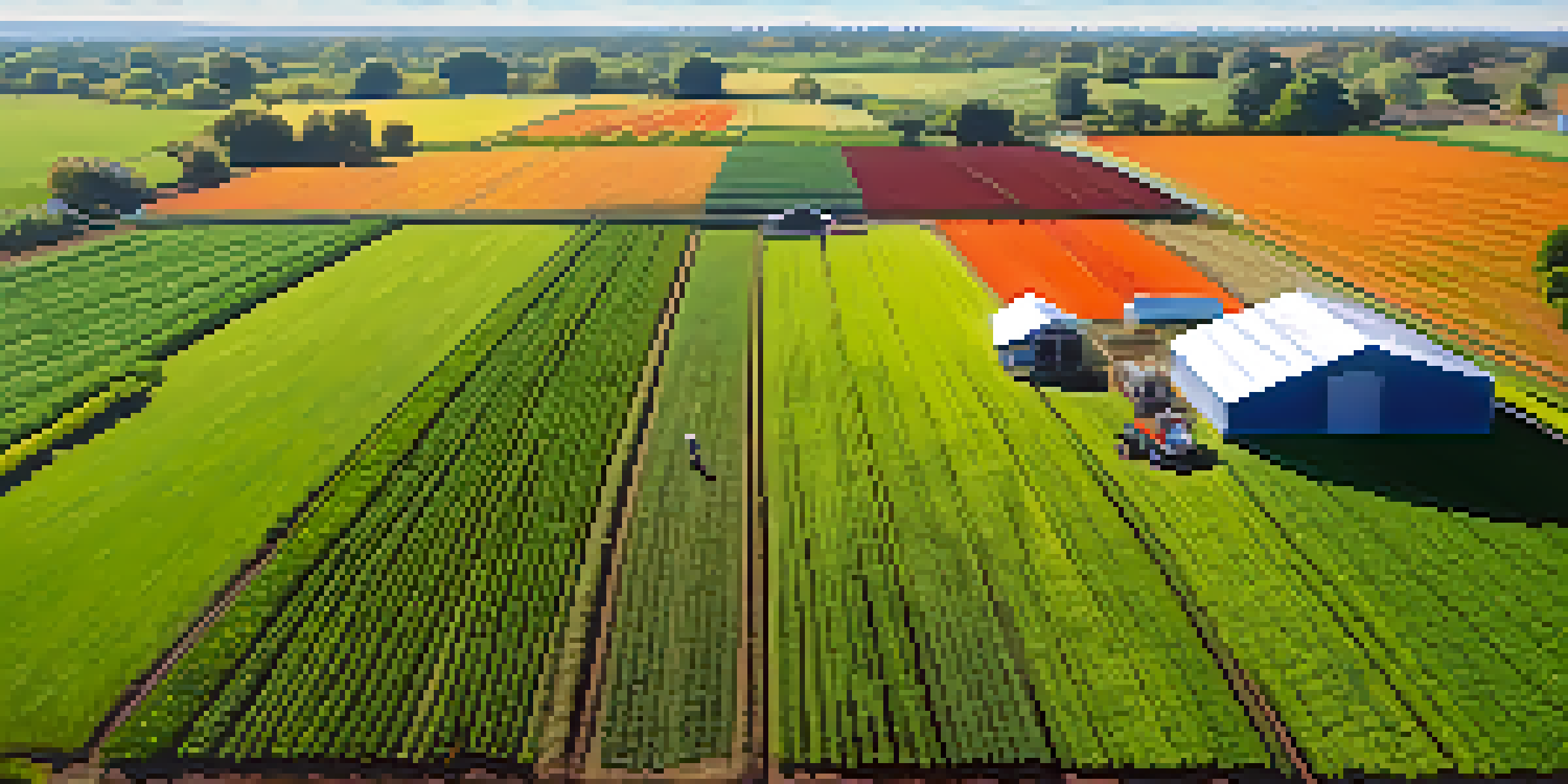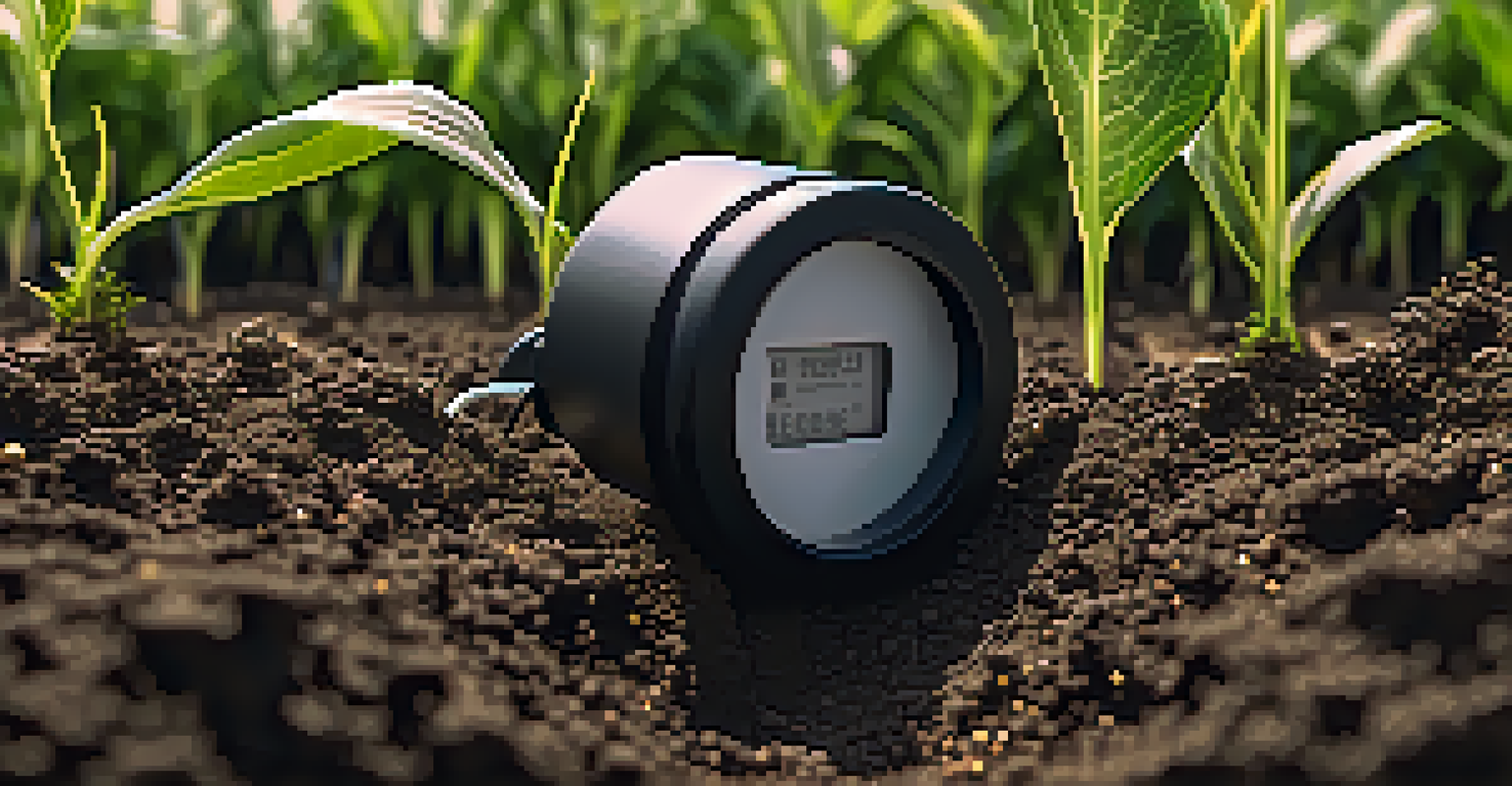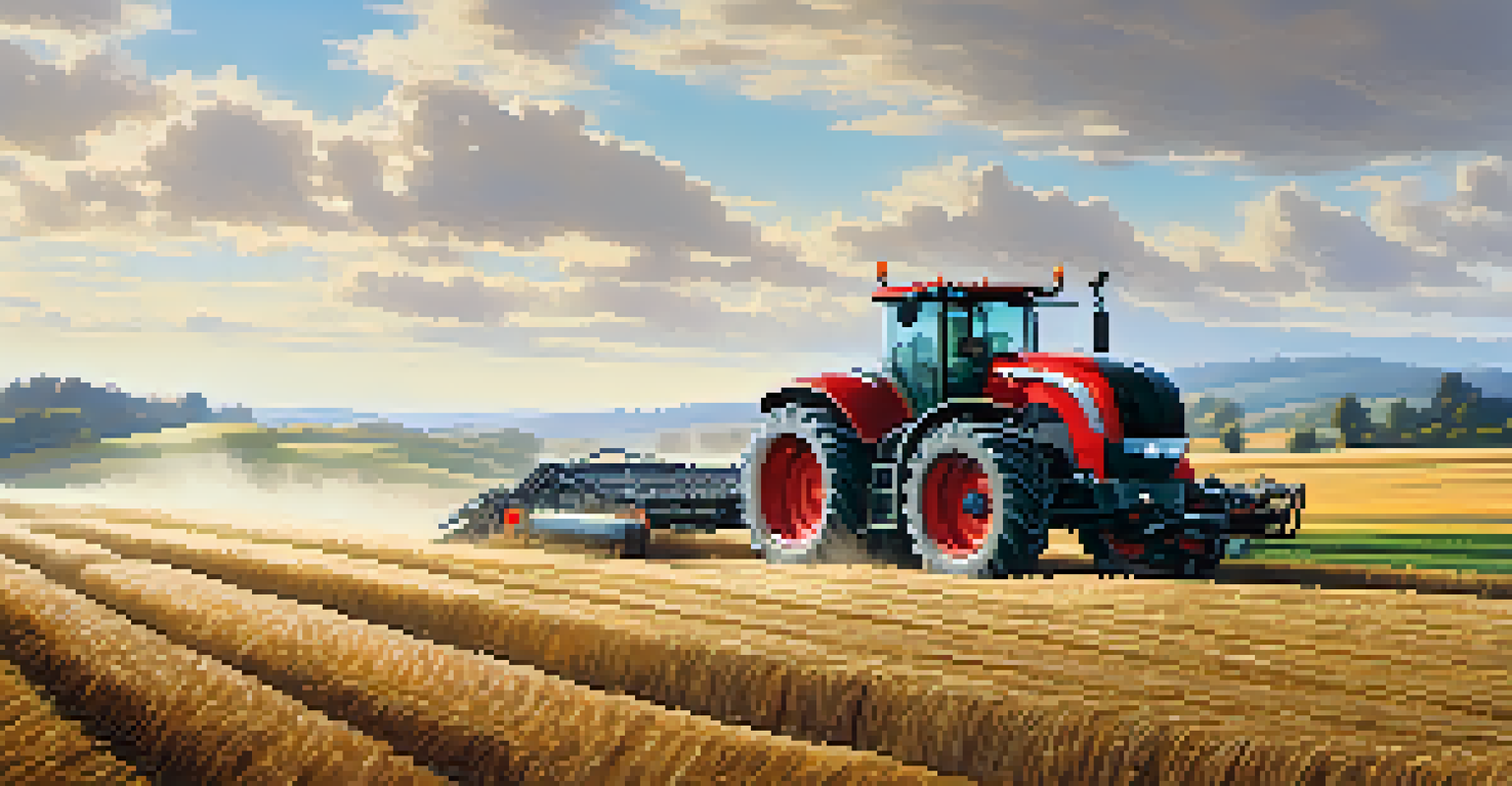Cyber-Physical Systems in Agriculture: Precision Farming Techniques

What Are Cyber-Physical Systems in Agriculture?
Cyber-Physical Systems (CPS) in agriculture refer to the integration of computer systems with physical processes. This technology allows farmers to monitor and manage their fields in real-time using data-driven insights. By combining sensors, software, and hardware, CPS enables a more efficient and sustainable approach to farming.
Precision agriculture is a management strategy that uses information technology to improve the efficiency of agricultural production.
Imagine a farmer using drones equipped with thermal cameras to assess crop health from above. These drones gather vital information about temperature and moisture levels, feeding this data into a central system. This seamless interaction between the physical and digital worlds exemplifies how CPS is revolutionizing agricultural practices.
The result? Farmers can make informed decisions that lead to better yields while minimizing resource wastage. This technology not only enhances productivity but also promotes environmentally friendly practices, highlighting its significance in modern agriculture.
Precision Farming: The Backbone of Modern Agriculture
Precision farming focuses on using technology to manage variability in fields, ensuring that crops receive exactly what they need for optimal growth. This approach can involve everything from GPS-guided tractors to soil sensors that monitor nutrient levels. The goal is to enhance crop yield while reducing environmental impact, making it a vital aspect of contemporary agriculture.

For instance, consider a farmer who utilizes a soil moisture sensor to determine when to irrigate. By accessing real-time data, the farmer can apply water only when necessary, conserving precious resources. This tailored approach not only saves water but also promotes healthier crops that can thrive under optimal conditions.
CPS Enhances Sustainable Farming
Cyber-Physical Systems integrate technology with agriculture, enabling farmers to use resources efficiently and promote environmentally friendly practices.
Ultimately, precision farming is about maximizing efficiency and reducing waste. As we face challenges like climate change and resource scarcity, these techniques become increasingly essential in creating a sustainable future for agriculture.
The Role of IoT in Cyber-Physical Systems
The Internet of Things (IoT) plays a crucial role in enabling cyber-physical systems in agriculture. IoT devices, such as sensors and smart equipment, collect and transmit data that inform farming practices. This interconnectedness allows for real-time monitoring and automated decision-making, making farming more efficient than ever.
The future of farming is not about the farmer alone but about the integration of technology with our traditional practices.
Imagine a network of sensors spread across a farm, measuring everything from soil pH to crop growth. These sensors send updates to a farmer’s smartphone or computer, providing insights that guide their actions. This level of connectivity means that farmers can respond quickly to changing conditions, such as a sudden pest outbreak or a drop in moisture levels.
By leveraging IoT technology, farmers can optimize their operations and improve crop resilience. This not only enhances productivity but also contributes to sustainable farming practices that are essential in today's world.
Data Analytics: Turning Information into Action
Data analytics is at the heart of cyber-physical systems in agriculture, transforming raw data into actionable insights. Farmers can analyze trends and patterns from the data collected by IoT devices to make informed decisions about their crops. This analytical approach helps in predicting outcomes and optimizing various farming processes.
For example, using historical weather data alongside current sensor readings, farmers can forecast the best time for planting or harvesting. This predictive capability minimizes risks and maximizes potential yields, allowing farmers to plan more effectively. Essentially, data analytics takes the guesswork out of farming.
IoT Drives Real-Time Farming Insights
The Internet of Things enables farmers to monitor their fields in real-time, allowing for quick responses to changing conditions and enhancing overall productivity.
As farmers embrace these powerful tools, they become better equipped to tackle challenges and seize opportunities. The integration of data analytics within CPS not only enhances productivity but also paves the way for smarter farming practices.
Autonomous Machinery: The Future of Farming
Autonomous machinery is revolutionizing precision farming, allowing for tasks to be carried out with minimal human intervention. These machines, ranging from self-driving tractors to robotic harvesters, utilize advanced algorithms to operate efficiently in the field. This level of automation can significantly reduce labor costs and improve accuracy.
Imagine a scenario where a robotic tractor can plow a field, monitor crop growth, and even apply fertilizer—all without a driver. This not only saves time but also ensures that every aspect of farming is optimized for performance. The precision of these machines helps mitigate human error and enhances overall productivity.
As technology advances, the capabilities of autonomous machinery continue to grow. This innovation represents a significant leap toward a more efficient, productive, and sustainable agricultural landscape.
Sustainability and Cyber-Physical Systems
Sustainability is a core principle behind the implementation of cyber-physical systems in agriculture. By utilizing precise data and automated processes, these systems help farmers use resources more efficiently, reducing waste and environmental impact. Sustainable practices not only benefit the planet but also improve the long-term viability of farming operations.
For instance, precision irrigation systems can minimize water usage while ensuring crops receive the moisture they need. This approach is crucial in regions facing water scarcity, as it conserves this vital resource. Similarly, CPS can help reduce the need for chemical fertilizers and pesticides by monitoring soil health and pest levels accurately.
Data Analytics Optimizes Crop Yields
By analyzing data collected from various sources, farmers can make informed decisions that predict outcomes and optimize farming processes for better yields.
Ultimately, the integration of CPS in agriculture offers a pathway toward more sustainable farming. By adopting these technologies, farmers can contribute to a healthier ecosystem while maintaining productivity.
Challenges and Opportunities in Implementing CPS
While the benefits of cyber-physical systems in agriculture are clear, several challenges exist. Issues such as high implementation costs, the need for technical expertise, and data security concerns can deter farmers from adopting these technologies. Understanding and addressing these obstacles is crucial for widespread adoption.
However, with the growing demand for food and sustainable practices, opportunities abound for innovation in agriculture. As technology continues to advance, costs are likely to decrease, making CPS more accessible for small and medium-sized farms. Additionally, educational resources and support networks can help farmers gain the skills needed to implement these systems effectively.

By tackling these challenges head-on, the agriculture industry can unlock the full potential of cyber-physical systems. This not only promises enhanced productivity but also drives the sector toward a more sustainable future.